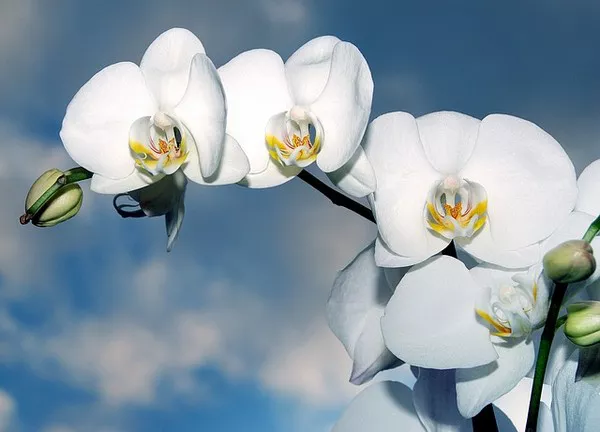Orchids are renowned for their captivating beauty, delicate flowers, and ability to thrive in diverse environments. Despite their enchanting allure, orchids, like all living organisms, have a natural life cycle. Eventually, their flowers will fade and wither away. For orchid enthusiasts, observing these exquisite blooms fade can be disheartening. However, understanding the natural process and implementing appropriate care measures can help ensure the orchid’s vitality and prepare it for future blooming cycles. In this comprehensive guide, we will delve into the steps to take when orchid flowers die, aiming to maximize their potential for rejuvenation and continuous growth.
Don’t Panic, It’s Natural
The first step in dealing with orchid flowers that have died is to remain calm and understand that it is a natural part of the orchid’s life cycle. Orchids, like most plants, have a blooming period followed by a resting phase. During the resting phase, the flowers will fade and eventually drop off. This is not a cause for alarm, as the plant is conserving energy and preparing for the next blooming cycle.
Remove Dead Flowers
As soon as the orchid flowers have wilted and turned brown or yellow, it’s essential to remove them promptly. Leaving dead flowers on the plant can attract pests and diseases, potentially harming the overall health of the orchid. Use sterilized scissors or pruning shears to carefully cut the dead flower spike at the base. Ensure to make a clean cut, leaving no stubs behind, to prevent infection.
Check for Pests and Diseases
While removing the dead flowers, inspect the orchid thoroughly for any signs of pests or diseases. Common pests that can affect orchids include aphids, mealybugs, and spider mites, while bacterial or fungal infections can also pose a threat. If any pests or diseases are detected, take appropriate measures to address the issue promptly. Isolate the affected plant to prevent the spread to other orchids and treat with suitable insecticides or fungicides as recommended by a horticulturist or orchid expert.
Assess Environmental Conditions
The health and well-being of an orchid are significantly influenced by its environment. Light, temperature, humidity, and air circulation play vital roles in the plant’s growth and blooming cycle. Ensure the orchid is placed in an area with adequate indirect sunlight, preferably near an east-facing window. Avoid placing the plant in direct sunlight, as it can lead to leaf scorch and damage.
Maintain a consistent temperature between 65°F to 75°F (18°C to 24°C) during the day and slightly cooler at night. Orchids also thrive in a humid environment with humidity levels around 50% to 70%. To achieve the desired humidity, use a humidity tray, room humidifier, or place the orchid pot on a bed of moist pebbles.
Adjust Watering Practices
Overwatering is a common mistake made by orchid caregivers. After the flowers have died, it’s essential to adjust your watering routine accordingly. Allow the plant’s growing medium (usually bark or sphagnum moss) to dry out partially before watering again. A good rule of thumb is to water the orchid when the top inch of the growing medium feels dry to the touch. Proper watering ensures that the orchid’s roots do not rot, promoting overall health and preparing the plant for its next blooming phase.
Fertilize Strategically
During the resting phase after the flowers have died, the orchid’s nutrient requirements change. It’s best to switch to a balanced fertilizer with a lower nitrogen content and higher phosphorus and potassium levels. A balanced fertilizer with an N-P-K ratio of 10-30-20 or similar is suitable for this phase. Apply the fertilizer every two to four weeks, depending on the brand’s instructions, to supply essential nutrients for the orchid’s recovery and future blooming.
Pruning and Repotting
Pruning can be beneficial during the orchid’s resting phase. Check the plant for any dead or damaged roots, and if necessary, carefully trim them using sterilized scissors. Dead roots can attract pathogens and lead to root rot, so removing them helps maintain the plant’s health.
Repotting is generally recommended every 1 to 2 years or when the orchid has outgrown its current pot. However, after the flowers have died, it’s best to wait until the plant shows signs of new growth or until the resting phase is over before repotting. When the time comes, choose a pot that provides ample space for the orchid’s roots to grow, use a suitable orchid potting mix, and handle the plant with care to minimize stress during the repotting process.
Provide Adequate Rest
Rest is a crucial element for the orchid to prepare for its next blooming phase. During this period, avoid disturbing the plant unnecessarily. Minimize repositioning, repotting, or any other activities that may cause stress to the orchid. Let nature take its course, and allow the plant to rest undisturbed.
Patience and Observation
Reviving an orchid after its flowers have died requires patience and careful observation. Each orchid species and individual plant has its unique growth patterns and timing. Be attentive to any signs of new growth, such as new roots, shoots, or leaves, as these indicate that the orchid is getting ready for its next flowering phase. Avoid hasty actions and let the plant guide you on when it’s ready for its next cycle.
Conclusion
In conclusion, witnessing orchid flowers fade can be disappointing, but understanding and embracing this natural process are essential for the plant’s long-term health and continuous beauty. By taking appropriate actions such as removing dead flowers, addressing pests and diseases, optimizing environmental conditions, adjusting watering practices, fertilizing strategically, and providing adequate rest, orchid enthusiasts can ensure that their cherished plants receive the best care possible. Through patience and careful observation, the reward will be the emergence of vibrant, new flowers, renewing the charm of these elegant blooms in your living space once again. Remember, a well-cared-for orchid will continue to grace you with its captivating beauty for years to come.


